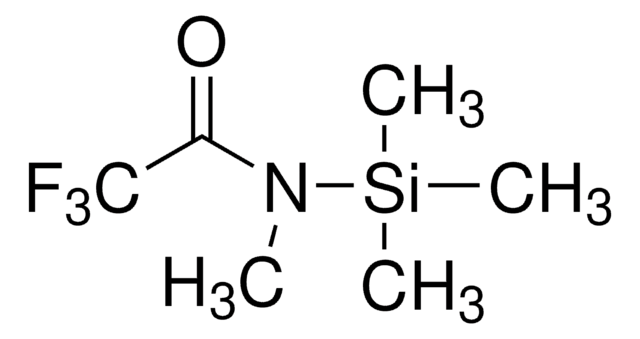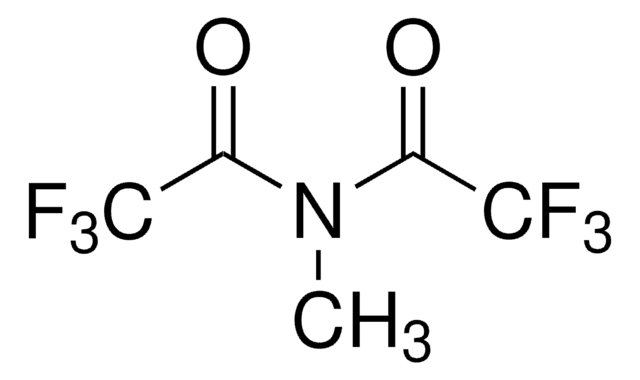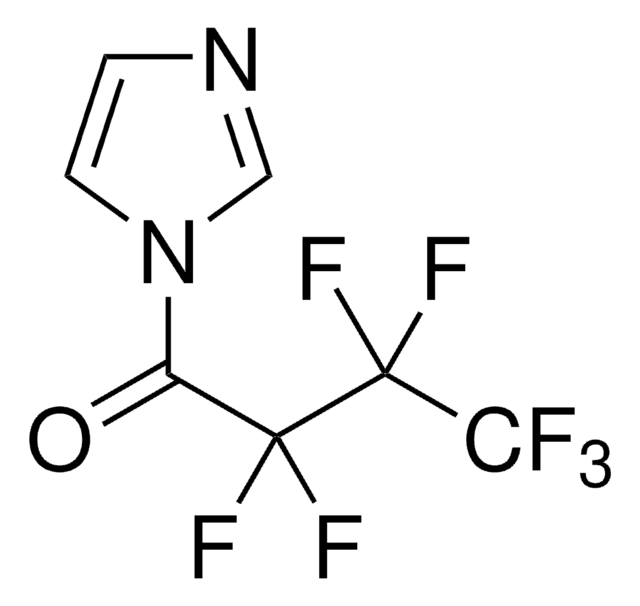M0789
N-Methyl-bis(trifluoroacetamide)
for GC derivatization, LiChropur™, ≥97.0% (GC)
Synonyme(s) :
MBTFA (N-methyl-bis(trifluoroacetamide)or BTFA (bis(TFA)), MBTFA
About This Item
Produits recommandés
Qualité
derivatization grade ((GC derivatization))
for GC derivatization
LiChropur™
Essai
≥97.0% (GC)
Forme
liquid
Pertinence de la réaction
reagent type: derivatization reagent
reaction type: Acylations
Technique(s)
gas chromatography (GC): suitable
Indice de réfraction
n20/D 1.346 (lit.)
pb
121-122 °C (lit.)
Densité
1.547 g/mL at 25 °C
Adéquation
complies for derivatization
Température de stockage
2-8°C
Chaîne SMILES
CN(C(=O)C(F)(F)F)C(=O)C(F)(F)F
InChI
1S/C5H3F6NO2/c1-12(2(13)4(6,7)8)3(14)5(9,10)11/h1H3
Clé InChI
AWGBWLXGUPTXHF-UHFFFAOYSA-N
Vous recherchez des produits similaires ? Visite Guide de comparaison des produits
Catégories apparentées
Application
Autres remarques
Informations légales
Mention d'avertissement
Danger
Mentions de danger
Conseils de prudence
Classification des risques
Flam. Liq. 3 - Skin Corr. 1B
Code de la classe de stockage
3 - Flammable liquids
Classe de danger pour l'eau (WGK)
WGK 3
Point d'éclair (°F)
113.0 °F - closed cup
Point d'éclair (°C)
45 °C - closed cup
Équipement de protection individuelle
Faceshields, Gloves, Goggles, type ABEK (EN14387) respirator filter
Faites votre choix parmi les versions les plus récentes :
Déjà en possession de ce produit ?
Retrouvez la documentation relative aux produits que vous avez récemment achetés dans la Bibliothèque de documents.
Les clients ont également consulté
Notre équipe de scientifiques dispose d'une expérience dans tous les secteurs de la recherche, notamment en sciences de la vie, science des matériaux, synthèse chimique, chromatographie, analyse et dans de nombreux autres domaines..
Contacter notre Service technique






